
A balanced yoga practice is designed to loosen, lengthen, and strengthen, at the same time it invokes a state of calm and peace within both your muscle and mental tissue. But what if certain areas of the physical body just can’t seem to let go of their tension?
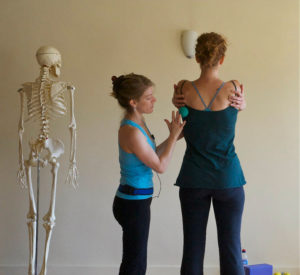
Let’s take the area of the upper back and neck. The trapezius muscle lies here and deep to it, the levator scapula muscle. Both can elevate the shoulders towards the ears or in reverse, pull the neck into the shoulders like a turtle’s head retracts into its shell. Despite the many poses that twist, bend and fold the head in yoga and regardless of how many times or ways you may mentally remind yourself to “let go” in these muscles, there always seems to be a nagging, tugging bound-up sensation. You may have even given the specific location of pain sensation an endearing name like “my spot.”
In massage therapy, we refer to these spots as trigger points. A trigger point is a nodule or knot of contracted muscle fibers embedded within a band of a muscle like the trapezius. These points can be exquisitely tender when palpated or compressed and can even refer pain to other areas of the body. For example, pressing a trigger point in the shoulder can refer pain into the neck or head.
Stretching is not effective at de-activating these hyperirritable points for two reasons. First, it would be impossible to isolate any stretch into the exact precise location of a trigger point. Stretch happens in a broad way across the entirety of a muscle belly from its attachment on one bone to its attachment site on another bone. Secondly, trigger points require a perpendicular angle of approach. Pressure needs to be applied directly into the body so that it gently pins and pierces the knotty and adhered fibers and laterally spreads them apart. Stretching tends to occur more longitudinally from attachment to attachment or end to end, not side to side. For these reasons, some external pressure that can probe directly into the body and somewhat deeply into the specific location of a trigger point, like a massage therapist’s thumb or elbow, serves the purpose well. If you cannot get to a body worker regularly (as trigger points need to be continually treated and de-activated until they dissipate completely), then learning trigger point therapy with a healthy self-care routine of massage on Yoga Tune Up® therapy balls can provide the same skillful approach a therapists hands can bring.
Like yoga, self-massage employs the process of micro-moving intuitively to your body’s own needs in order to adjust the dial of pressure and positioning (ie. to precisely find “the spot”) so the body can receive the most optimal release with the least amount of your effort.
If you locate a trigger point there are few ways to de-activate it:
Step 1. Attempt to sandwich the knot between the ball and your body. (Remember pinning the affected area from above and below encourages the parallel fibers to spread laterally so be sure to balance your body enough to stay on top of the trigger point)
Step 2: Deeply breathe and relax every muscle you can while the trigger point is contacted and compressed for about 7-10 seconds.
After treating 3 or 4 trigger points, follow up with appropriate asana or stretching exercises as in this trapezius stretch video.
If you find it simply too painful to be directly on the trigger point, fear not! Move away from what feels like the epicenter of the trigger point to slightly adjacent to it in any direction and repeat Step 2.
When there is a trigger point in a muscle, that muscle is restricted from fully functioning and therefore neither can the joint to which that muscle attaches. This can lead to further trigger point formation and disfunction in other muscles and joints that are attempting to compensate for their infirm neighbor!
Self-massage techniques like the one described above isolate, squeeze, compress, melt down and pry loose muscle fibers that have become adhered to each other. All of this commotion within the tissue increases localized blood circulation and ultimately bathes and re-hydrates the area once you roll off the ball. Notice any rosy pink spots on your skin after a good session of ballwork?! Yoga Tune Up® self massage balls tease apart the “sticky” or adhered parts of the tissues, literally separating the individual muscle fibers within the actual muscle so that each fiber can literally “pull its own weight” instead of their neighbor’s. Your muscles are then better able to fully contract and fully release in all of its fibers as any movement dictates.
Ballwork is an energy and cost eficient way to reach all your aches. You can then move with less effort, with less pain or be happily pain-free!
General pregnancy contraindications: center of the top of the trapezius muscle, center of buttocks (center of “back pocket”), and the lower leg.
Learn about the YTU Therapy Ball Products
Watch the QuickFix Online Videos


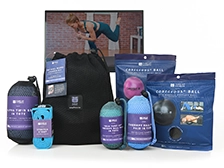
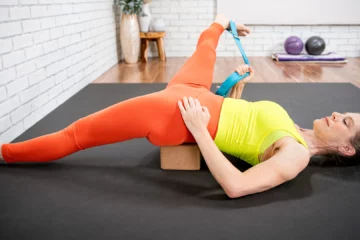
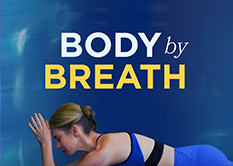
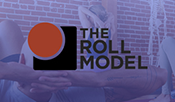



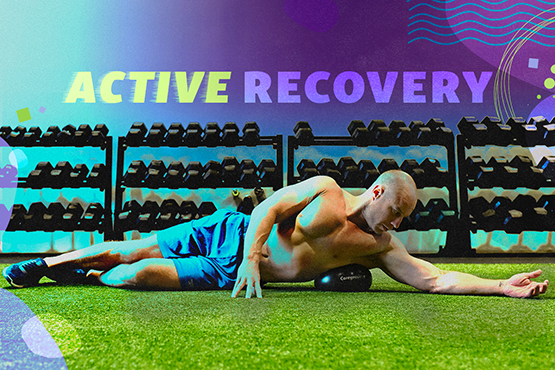
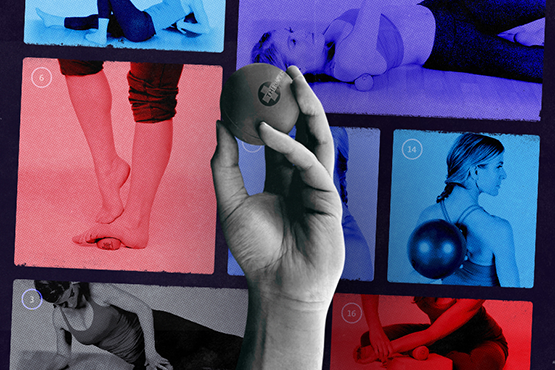
This is so helpful and informative– thank you Lillee! I will definitely keep this in mind as I continue to do ball work on my own and add it to working with students.
Thank you for introducing me to the concept of trigger points. As a yogi- I thought stretching would be the only one that could help take care of my sores & aches. Your insight on cross fibering the trigger points as a complement to stretching gives me more motivation to roll out my spots!
Thank you for the step by step instructions! I have been rolling since we completed our YTU training and I alway wonder if I’m doing it right. But you have clarified some questions for me, so I am going to keep rolling!
I’ve always “known” what these trigger points are, but at the same time had no idea how to really dive in and loosen them up. This was a very thorough explanation, I will start using your 2 step “de-activate” method in my next roll out.
Great to read your explanations on trigger points. The use of yoga tuneup balls also give people more awareness of what is happening to their body. They become an active participant in maintaining/improving function and movement. This can be very empowering.
Lillee this is such a great explanation of so many things for me personally. I have always had tightness and tension here. I am sure it may have something to do with my previous profession of holding scissors and a blowdywr up for 20 plus years. Even with massage work I would feel great most of the time after but sometimes it would trigger a headache or even more soreness. I love going for massages ( who doesnt??) but it’s nice to know that I can create release on my own time trying and exploring different ball rolling techniques and stretches with strengthening / balancing exercises myself . The detailed explanation of HOW stretching is not effective in releasing the trigger points was a lightbulb for me! Thank you! I look forward to taking more immersions with you.
I am so thankful for my therapy balls, and for just finding a way that I can directly impact and improve tissue just by ‘hanging out’ at home watching tv, at my desk at work, in the car, before yoga, before spin class – pretty much everywhere! It’s to the point where i rarely have to even think about it – I just zone out and do it! Over time I have become more creative to get into spots – alpha for the QL with a Coregeous ball to prop up my tush has been a keeper! I have found that all the work on my hamstrings has really helped my lower back let go, and the constant rolling on my feet at work as I toil away at my desk has really helped restore some mobility in my ankles as well.
You are a clear and engaging writer, Lillee.
I have been rolling on the Tune Up balls for a little over a year and have been quite delighted with the results. Not only have achey spots in my tissues diminished, but I have indeed gained a great deal of flexibility. That was an unexpected bonus!
After our Yoga Tune-Up weekend, I noticed how tight my upper back is. I always knew I had a really tense neck, but i was unaware of how tight my shoulders, especially in my rotator cuff area, actually were. After doing a few of the Yoga Tune Up exercises and having a pain sensation, I was able to become a lot more aware of the sensitivity I have in that area. Since then, I’ve been trying to do more stretches to alleviate the pain, but this article was a nice reminder to use my tune-up balls the proper way AND follow up with stretches. I haven’t had the time or courage to use them since the training, in fear of hurting myself more but this article has given me a nice boost in confidence and a remainder of the correct way to handle this pain. Thanks again!
I love the way you explain this! I have been addicted to trigger point therapy ever since I read books by Bonnie Prudden which of course lead to Travell and Simons’ epic work. A blend of ball therapy, use of knuckles followed by yin yoga has cured many tight and stiff muscles for me.
Lillee – thanks for the cogent explanation. I know stretching isn’t the cure all for all ailments but I didn’t know the anatomy and physiology behind the why (the context grid!). Double and Triple thanking you for your wisdom and know-how.
Thanks for the thoughtful insights. I guess the intensity of these trigger points has made me shy away from the therapy balls in the past, but here I am again….saying hello to these “old friends” (?) again. One thing that caught my attention was the termed “referred pain” above. Sometimes I get these referred pains in an area fairly close to a trigger pont I am working with, so that anatomically I can track it. Other times, it pops up a significant distance away and in some other tender spot. I can’t really track it anatomically and wonder if this referred pain is more often related to the fascia than the muscles? Or possibly nerves?
The frequency of ball work to a certain area is a very personal and subjective choice. The more educated you are about anatomy in general and YOUR anatomy specifically (by that I mean how aware are you of your body, i.e. how embodied are you?) the easier it will be to assess when enough is enough. Too often we rely on outside sources to direct us in usage or “dosage” but YTU ball work (and long-lasting healing) requires you to dive into your personal experience much more. As a rule of thumb, if you are working a new area or a compromised one, tread slowly and moderately. If you use the balls daily there, assess your self-care approach for that day by learning to distinguish what is sore from chronic tightness and what is sore from being worked enough the day before. However, if an area has chronic tightness, it needs chronic attention!
Thank you for sharing this, I have to say that I had chronic problems with my hamstrings and I spent a lot of time stretching them without result. A fews ago I did a whole week of ball work not only on the hamstrings but the muscles behind the leg and it has made a huge difference. What I am not sure of, however, is how much is too much. I worked on my muscles everyday for about 10 days. and they have been pretty okay since. Is it okay work work on the the same muscle everyday?
The THerapy Balls have changed my world. I couldn’t be more grateful for the chance at some self massage, to locate those blind spots, stuck, muscles, knotted bound up areas. There isn’t a day that goes by that some part of my body isn’t rolled or released, hidden tension, to prepare the body for movement, and de-stress and unwind. The body’s ability to rehabilitate itself when given the opportunity is immense. Fabulous!
[…] Tune Up® Blog « When Stretching Just Isn’t Enough, Try Self Massage Self Massage for Pain Management […]
I had never heard of ball therapy or YTU before this weekend. I had no idea I was in for such a treat! Thanks, Lillee for showing me techniques to loosen up my muscles and relieve stress in my shoulders.
I too love my Yoga Tune Up Balls!! And it seems that, whenever I’ve left them aside for a few days (or foolishly weeks), it’s never taken my body very long to remind me why I (we all) need them! And I really love your very concise explanation as to why all the stretching in the world will not release tight knots of contracted muscle fibre. I will definitely be using your words to help explain why the Tune Up Balls work so well to release our “trigger points”. Thanks for that!
I do have a question – can you explain to me the pregnancy contraindications?
This makes so much sense! I constantly try to stretch the areas where I am feeling tightness, but to no avail. Even if I feel some temporary relief, the tightness or knot in the muscle just seems to come back after a short time. After learning the self-massage technique with the YTU balls, I found that I had less pain in a pose as simple as Sukhasana, or seated pose. Sitting during meditation practice was feeling almost unbearable, but after using the trigger point technique I felt a lot of relief in my erector spinae and am able to sit with good posture for longer.
While there are a multitude of yoga poses that are phenomenally effective in working the hip muscles, there is no pose — at least for me — that I have found to be sufficient to really get into the shoulders. The balls are little angel’s sent down from heaven. They offer so much more than any stretch. This article does a great job in explaining the trigger point reaction when working with the balls vs. simple stretching. It’s one of those hurts so good things, and what’s even better is that it’s a self-massage that can be done anywhere.
I love Trigger Point Message. And you are right, stretching will not get them out. At least it didn’t for me and I was doing a full Postural Yoga routine 6 days a week for almost 8 months straight. I alternated the routine after my side hip muscles (around my rectus femoris and vastus laterilus areas on both my right and left leg. Additional to that I had a weird pull on my back left heel every morning for months and pretty much just ignored it and believe it or not I also had a sciatica problem on top of all of that from staying too long in certain poses like pigeon pose would trigger it for me.
So I came across some trigger point therapy tools and started massaging away, the sciatica problem went away in less then 2 weeks, the heel pain which was located all the way up in a small knotted fiber ball in my left calve muscle took almost a month to fully massage out and my two sore spots on the side of my hips took a little more than 2 weeks to massage out but all of the pain is fully out of those areas and has not returned and I no longer stay longer than a minute in poses usually even less than that.
I love trigger point massage and now with my new Yoga Tune Up balls I have some work to do on my upper back! Woo hoo!
Nicely written article. I like to use the analogy of a rope with a knot tied in the middle of it. You can’t stretch that rope to its maximum capacity because of the knot. First, you must remove the know, then the overall extensibility of the rope increases. Same goes for muscle. Remove the adhesion (trigger point), and this will improve circulation to the ischemic area, thus improving its contractile properties. Thanks!
I have found that holding the massage tool on my trigger points for 30 seconds to 2 minutes works best for me.
This is a great explaination on how to use the tune-up balls. It gives me some ideas on how to craft my sequence for teacher training. Thank You!
The combination of massage work, yoga balls, and yoga is so impactful. It makes such a difference. Each one on its own is really great but the combination takes it to a whole new level.
What a fantastically clear explanation as to why trigger points remain after days, months, even years of yoga practice! I was once at a workshop with a Senior Yoga teacher who was asked whether yoga practice should be supplemented with any other fitness or therapy work. He replied with exasperation “Why do you insult yoga this way?” The YTU balls are no insult! They are an awesome compliment to yoga practice and an amazing tool for self-care.
This is a great reminder of how many ways we can and often must approach the body. Ball work allows us to be more intimately connected to these challenging areas and to ‘see’ beneath the skin and into our tissues. It quickly makes us aware of our spots and informs us as to our imbalances. Ball work has been a way of body mapping and knowing how best to navigate any given movement with greater awareness.
There is no question that one hour or so of stretching, even on a daily basis, is not always the answer for tight muscles and ligaments. We can inhabit bad or unhealthy postures and positions for hours unconciously that create a muscle memory that must be undone. If I could afford it, I’d have body work on a weekly basis – But since I can’t, those Yoga Tune Up balls are a godsend! We all have our tight spots and tissue ‘triggers’ that need continual attention and self-massage via Yoga Tune Up is a wonderful addition to a regular Yoga practice.
I have a chronic area of tension in a portion of my upper right trapezius due to overuse. My humerus is not being fully supported due to a torn supraspinatus tendon, and I realize I compensate with my trapezius to keep my shoulders level. Plus, I’m sure it’s overused due to daily life, even though I’m mindful about form. No amount of stretching would ever get to this tension, but the therapy balls do. It makes sense that general stretching will not really dig into the epicenter of a knot. I love visualizing the knotted connective tissue being pulled apart. Thanks for reinforcing the need of consistency with the bodywork. While my shoulder won’t be fixed without surgery, at least I can manage things in the meantime.
As a yoga teacher and Thai massage therapist, I realised I am good at hiding my own body blind spots from myself…BUT those YTU balls- they reveal all! The fluffiness through my back has been incredible as I work on my upperback once a week. I am taller and pain free because of it.
This is a great and throughout article that gives lot of clarity and actual understanding why the ”ball work” simply work.When I got first exposed to YTU balls,I could not withstand the pressure in my upper trapezius,levator scapula and supraspinatus.There tissues of my body were just so much worn out that to feel them was too much to experience in my self..Few months down the road,with consistent work and precision,sensations started to change.The trigger points begin
to clear out and my tissues started to embody much more happiness.Now,few years later,my body craves this deep touch regularly and the ball work provides me with an incredible sense of relief.
I appreciate learning new ways to release stress points or trigger points as you say in massage. I believe that our overall posture has taken a toll on our overall health. I have many clients who can not raise their arms to their ears. Posture and upper back are so compromised with the stresses of the job and families. I do find that using ball therapy or even foam rollers to help loosen up the knotted area and re stretch after has shown to be more helpful.
This post makes so much sense in light of the teacher training and our work with the YTU balls. They make such a good compliment to the yoga practice. It was a bit of a shock to me to find out how tense my back was; I thought stretching was enough!
I had never realized that massage serves another function other than loosening tight muscles and releasing metabolic waste. Knowing that it also keeps our tissue fibers pliant, ‘unsticky’ and lubricated, preserving our range of motion and helping prevent injury as we age, makes me think that massage is less luxury and more necessity. How wonderful, then, that we can get those same benefits from just a few minutes and a therapy ball.
Hi, awesome article on wellness. The wellness industry is absolutely growing. It will be interesting to see how it will compete against the pharmaceutical industry.
The first reaction and sensations to YTU therapy ball is excruciating! I love the feeling of releasing that old build of of tension those trigger points hold within the muscles. A spongy, warm sensation that pours in after is well worth the initial discomfort. Its wonderful to have the power of self healing available in moments with the YTU balls 🙂
I did NOT love the YTU balls at first. My initial experience was shoulders and upper back with new harder rubber and it was excruciating! However, as soon as i released i could tell that something magical had happened. My boyfriend is thrilled that i have found a solution, other than whining to him, to release the tension that nudges my shoulders to my ears daily. The intelligent mapping out of the bones, muscles and fiber directions is fascinating and i look forward to building my whole body strategy.
Great explanation of trigger points and why they can’t be resolved by stretching alone.
We all have trigger points and know how good it feels when someone works them out, This article effectively explains how to dissipate a trigger point and how valuable it is to work on our own trigger points. Ultimately, it’s about making a commitment to self care and giving ourselves permission to make the time to do so
I LOVE MY YT BALLS. I CAN’T WAIT TO START USING THEM ON A DAILY BASIS TO HELP WORK THE KINKS OUT OF MY SHOULDER AND HIPS.
I don’t know what I can add to Lillee’s great explanation, but I’ll try.
I have quite a few trigger points in my back and glutes, and I get great relief from one particular massage therapist–whom I love. But because of the cost, my visits to him are few and too far between. Today I used the yoga tune up balls for the first time and loved them. My back widened, my trigger points clamed down and I breathed easier.
I will continue to use them and can’t wait to learn more about their powers.
yoga plus trigger point work – oh yes. Of course. I shall explore.
The last third party massage I had was over 3 years ago at a spa while on vacation. Prior to Yoga Tune Up and learning more about my anatomy, I thought massages were nice, but not necessary since my yoga practice keeps me active and I have no injuries. After my first encounter with the YTU balls, I have a new and deeper understanding of the importance of perpendicular pressure to get movement, increase circulation and warmth to the muscles and loosen the fascia. And it feels incredible! It’s like “hello trapezious!”
YTU balls are fantastic. I was introduced to them last week and can safely say i will never look back!! Getting a massage every other day or every week even would be great – but living the fast paced life we live in New York City, sometimes that just doesn’t work out. Most of us are sitting hunched over our work or study desks all day staring at computer screens for the most part of the day and our bodies and postures are completely ignored – once we get up we feel the pain in ‘that spot’ or ‘those spots’ .. which stretching or running to a yoga class right after work might not fix.
Stretching alone can not reach these trigger points which are deeply embedded in our muscle tissue – which is where the YTU balls work comes in.
They really are your own personal massager’s as Becca mentioned above AND also make a great toy for my 8 month old son!! 🙂
Like many of my fellow yogis and yoginis I have often found that I am plagued with knots despite my quite regular yoga practice. And wouldn’t it be wonderful to be able to get regular massages or perhaps have a spouse or significant other that enjoyed giving them?! But I live in the real world where due to stress, injury or over-use I often walk around with pain in my trigger points- pain that I’ve learned to accept. How abhorrent! Now that I’ve been introduced to the yoga tune-up balls I now have a personal massager to work out my tight spots (my boyfriend is cheering in the background)! By applying ball-rolling techniques, or other experimental massage techniques I have been slowly working out my knots- mainly in my QL (Quadratus Lumborum) and along my spinous processes of my cervical spine. As a result i’ve found that I’ve been walking around relatively pain free AND I’ve noticed that there is more of a range of movement in my muscles during yoga. I’ve become to enthusiastic about my balls that I’ve began to share them with friends- mainly who suffer pain and tightness from sitting at a desk all day! Spread the word yogis!
Boll rolling is not just for releasing and down regulating but you can apply it in a way to lengthen the fascia and maybe even strengthening it so that your performance for yoga poses, sports or your general being can improve. I am learning how to take care of my own body and spirit from so many different spectrum. Thanks Lilee! 🙂
I often thought that yoga would be enough to stretch my ever tight back and neck muscles from sitting hunched over and stressed in front of the computer most days and while it relaxed me, the pain was still there. I love the specific examples given to lesson the tension that I think so many of us suffer from, thank you!
Yes Gina T, it is safe to use the balls for the muscles surrounding the head, jaw and even face. Avoid the areas of the eyes and anterior neck and use your hand instead of a flat surface when trying to apply gentle pressure to the bumpy and knobby places around the cheeks/temples/jaw and forehead- you will have more control that way.
I suffer a lot of pain in the muscles around my jaw. Is it safe to use the ytu balls on my face?
Thanks so much for the info and the clarification about trigger points. I think I have too many to count at this point but thanks to the YTU balls I at least have a starting point!
The yoga tune up balls have helped loosen areas for me. I never knew about self massage so I enjoyed the class and appreciate the explanation in this article. I have since learned that I have multiple ‘trigger areas’!
These yoga tune up balls are amazing and were well worth purchasing. Sometimes I have a hard time getting them in the right spot, but once I do I feel a huge release in my muscles. Once you get used to them and get past the pain part (if you have any) they definitely help loosen whatever is tight and help you relax. I think they work better than a foam roller.
Thank you for this very helpful explanation. I struggle with trying to relieve ‘my spot’ with yoga and stretching, and these methods do not offer deep relief. Understanding it as a trigger point and how to address it with self massage is very helpful. My spot thanks you!
My roomies can’t keep their hands off my YTU balls! One of them is a runner, and the other a former massage therapist.
(So they both know their aches & pains).
Sometimes a killer yoga class will highlight my trigger points, only to leave them seeking more peace.
The YTU balls are a great way to smooth things out after intense yoga. Thanks!
My husband suffers from headaches from constant neck and shoulder tension. Since teaching him how to use the YTU balls to loosen these tight areas, his headaches have become less frequent.
Thanks for posting details on how to affect trigger points. It appears I wasn’t staying on the ball long enough!
YTU balls are something that I wish I had during my intense swimming years. I have always been tight due to stress and swimming, After I finish swimming I felt like a huge weight was lifted off my shoulders but I the pain in my shoulders have remain. Using YTU balls in the last month have change the range of motion in my shoulders and I feel a little bit more comfortable in certain asana.
This article spoke directly to me on a day when I really needed a reminder that I can work on my stress-triggered trapezius knots and that I don’t have to just live with the discomfort and tightness. Thank you!
QUick and easy. thanks.
I never considered massage as an important part of an exercise program. However, muscles that have been worked really need a good “rubbing”. Even though massaging out those tight spots is painful at the time, it feels soooo good afterwards. I have been sitting on my tune up balls but will now start using them on other parts of my tight body!
This is some of the best trigger point therapy I have tried! About a year ago my doctor prescribed massage for me since I had so many trigger points, but that expensive routine didn’t last long. I am thankful for Yoga Tune Up balls because I can use them anytime, anywhere, and as gently or aggressively as I need.
I did not realize that stretching out a sore spot was not an effective way of loosening up a “tight spot” Your explanation about isolating the trigger point (or area around it) makes sense now that I have read about it and tried it for myslef with my Yoga Tune Up balls.
Thanks
Felicia
Are the yoga tune up balls more effective than foam rolling? What if they hurt too much – can I work my way up to using them by starting self myofascial release with a foam roller?
I have used the YTU balls several times since takng your class in Chicago and they really do wonders for loosening tight areas. I wish I had them with me right now!
I felt better just reading this! We were introduced to the balls during our yoga teacher training and I love them. But I did not realize until just now reading this post that stretching is not always the answer to what ails us and why self massage works for certain needs. Usually I think stretching will relieve my stiffness, but since discovering the balls, I now use them for this purpose as well. It makes a big difference in how I feel.
Thank you for explaining this!
Great article!
When I woke up with a stiff neck, the ytu balls helped clear it up way faster than waiting days for it to unwind itself.